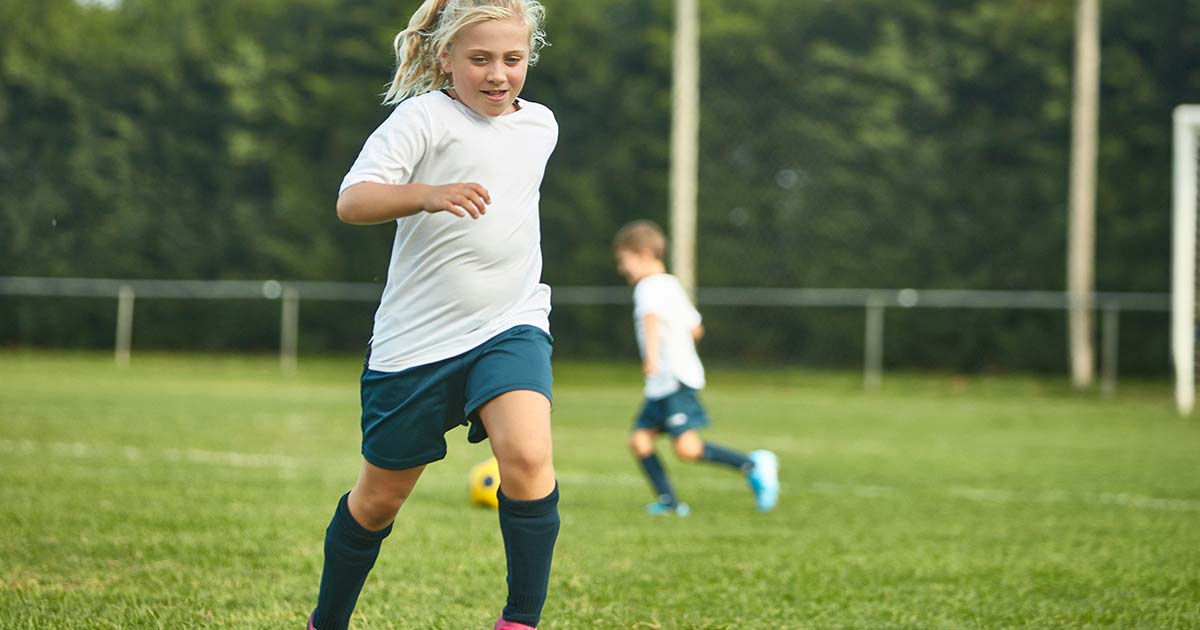A Guide to Cross-Training for Football Players
Advice to improve your movement, fitness, and overall health from the world's #1 in orthopedics.
Doing the same thing over and over isn’t only bad for the brain, it’s also hard on the body. That’s why exercise physiologists like Max Castrogaleas, MA, CSCS, *D, from the HSS Westchester Sports Performance Center, recommend that athletes and their coaches make time for cross-training.

“Cross-training is a valuable supplement to a football player’s traditional strength and conditioning program,” says Castrogaleas. “It takes you out of your comfort zone, and it’s a great way for a player or coach to identify weaknesses and figure out ways to turn them into strengths.”
Another benefit of cross-training: It can fill in the gaps left by traditional sports training programs. For example, football players often focus on working multiple muscle groups to build size, strength and power but can sometimes forget to include flexibility and balance training. By adding in the right workouts, athletes can also improve range of motion, efficiency of movement, core strength and dynamic stability, while minimizing the risk of overtraining the body parts they’re working on the field and in the gym.
How cross-training can reduce injury risk
When an athlete is able to move smoothly and efficiently, they’re able to perform better out on the field and less likely to wind up with soft-tissue injuries that can occur if the body starts to develop imbalances and faulty movement patterns, says Castrogaleas. Improving balance, flexibility and mobility, core strength, cardiovascular fitness and fundamental movement patterns will lead to improvements in performance. Cross-training with low-impact activities can also improve joint function and protect against joint injuries. It can stimulate the muscles that stabilize the body and help with maintaining good posture and body positioning when moving or at rest.
Getting started
“The best cross-training activity is one that will benefit the athlete the most and that they’ll actually do on a regular basis. Consistency is key,” says Castrogaleas.
Each of the activities listed below can be performed in a one-on-one or group setting. Athletes who are pursuing a cross-training program on their own (not with their coaches and teammates) should consider seeking the guidance of a certified fitness professional who can help you create a plan that complements your team training.
Just like in football, starting with the fundamentals of the cross-training techniques below is key before progressing. Each movement, pose and stroke matters. And by starting out with good form, players won’t wind up creating new problems or injuries. Seeking out professional guidance from a person certified in teaching the new workout will ensure players develop a solid foundation.
1. Pilates to increase speed and power
Pilates is a fitness regimen designed to correct and strengthen an individual’s movement. In general, it focuses on improving posture and making sure the body is using the right muscles for each type of movement. Pilates is both a mat-based and an equipment-assisted exercise program. Apparatus such as a Pilates Cadillac, reformer, barrel or chair will provide assistance (to help with balance, for example) and resistance. This will allow the athlete to engage the muscles that are intended to be activated during the movement. Adding Pilates to a football training program can enhance the athlete’s running, jumping and throwing mechanics, leading to increases in speed and power.
2. Yoga to boost flexibility and prevent injury
Yoga uses the athlete’s body weight to build strength, increase flexibility and improve the range of motion in the joints. This is a natural part of the yoga workout, which involves moving the body through a variety of poses. Yoga can also be used to help heal the body and/or maintain fitness after injury.
Incorporating yoga into a strength and conditioning program may reduce movement restriction throughout the body. The flexibility required within yoga and the emphasis on fluid movement between poses may enhance a player’s ability to ward off soft-tissue and overuse injuries. It may also make their body motions more efficient in whatever position they play.
3. Swimming to build lung capacity and stamina
Swimming is a low-impact, full-body exercise that increases lung capacity. It also requires moving the body in ways that aren’t common in football, which can improve the player’s range of motion and strengthen underused muscles.
During a football game, gains earned in the pool can help combat fatigue because swimming improves endurance, which translates to greater stamina and performance. This extra stamina will be beneficial during the final minutes of the game when every second counts and a tired body can cause good running or throwing form to break down.
It’s never too soon (or too late) to begin
The goal of every high school and collegiate football strength and conditioning program is injury prevention with performance enhancement. Ensuring athletes remain healthy and perform at the optimal level on Friday night or Saturday is a yearlong process that begins right after the final game to prepare for the next season.
While it may seem daunting to add more to your or your team’s busy routine, assessing what is needed—and modifying the weekly workouts accordingly—just might be a real game changer.
Published 9/21/2021





